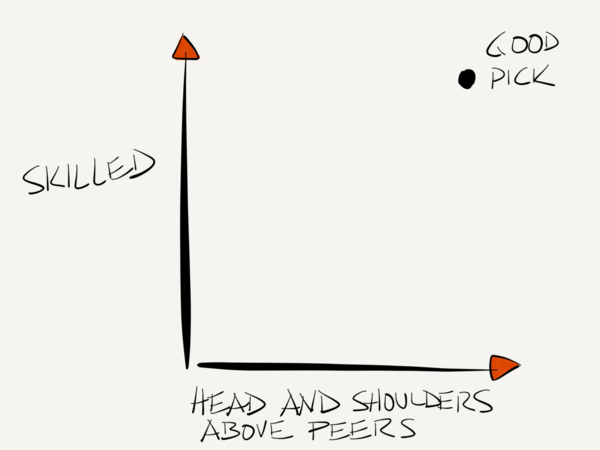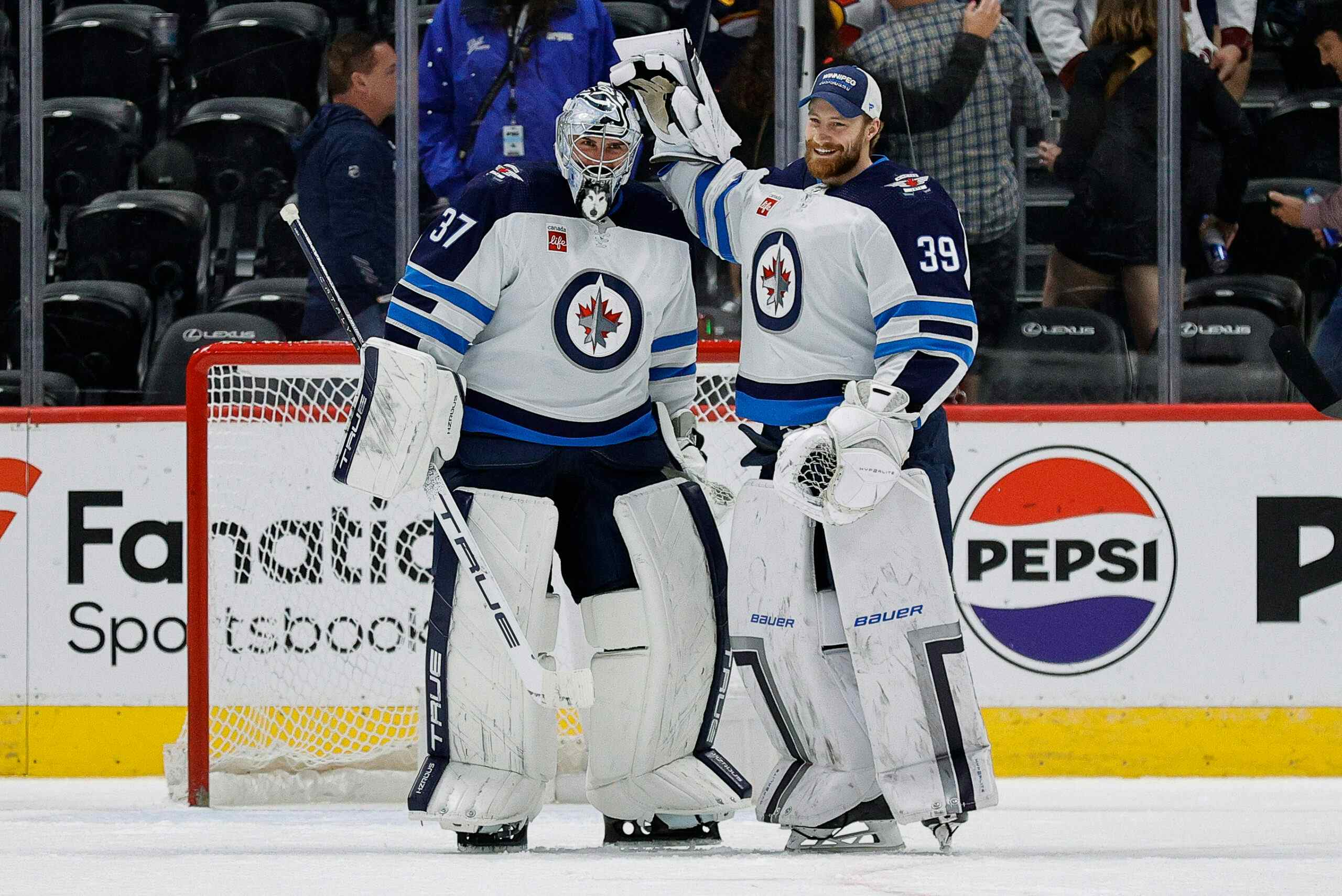A Graphic Guide to Succeeding at the NHL Draft

Ah, the NHL draft. A time of anxious anticipation.
But we’ve got you, er, covered.
To help you budding GMs out there, we at Canucks Army have prepared a handy list of do’s and don’ts for a successful draft. Thanks to @joshweissbock and @MoneyPuck_ for help compiling these tips. Ah, who am I kidding. They came up with them, I just added the witty remarks.
But enough foreplay, let’s get to the action.

1. Don’t draft over-agers
Yeah, I’m looking at you, Mike Gillis. Look, it’s great to think you’re seeing something in these kids that nobody else has, but if they’ve been passed over in the draft for a couple of years already, you probably aren’t. What you probably are seeing is a man playing among boys. Wait, that sounds wrong. But you know what I meant. Age, size and experience make a huge difference in the junior leagues. Don’t be fooled into thinking this represents any kind of skill advantage.

2. Do draft players that succeed against their peers
It’s great to have the tools, but unless a player has demonstrated that he can put them together and use them to succeed, take a pass. You want guys that have shown they can stand out against their peers.

3. Don’t draft solely based on size
And when I say, players that stand out against their peers I don’t mean they’re tall. Size is great. Size is an asset. But don’t pick solely based on size. That’s how you wind up with Alex Stojanov and Libor Polasek. Size can be deceiving, especially at such a young age where the size differences can be, uh, huge.

4. Don’t draft stay-at-home defensemen
Just don’t. “Stay-at-home” is just code for big and slow. Do draft puck moving defensemen that might not have the same offensive upside as some others. There is more to playing defense than standing in front of your net and clearing out opposing forwards. You need to be able to retrieve pucks and get them out of danger. Sure, having a scoring touch would be nice, but not everybody can be Erik Karlsson. You want mobile guys that can get the puck out of the zone and make a good first pass to transition the offense. If you’re really hung up on those big lumbering defensemen of yesteryear, there are plenty available in free agency.

5. Do draft players that can score. A lot.
You can teach defense and positioning. You can’t teach offensive skill and the knack for finding open ice. The point of a hockey game is to score goals. Draft players that have shown they can do that on a consistent basis, i.e. be aware of outlandish shooting percentages. Don’t get me wrong, keeping the puck out of your own net is important too. But one-dimensional players that specialize in that are a lot cheaper on the free agent or trade market. Look around the NHL and you’ll that contract values correlate very well with point production. You want those good, offensive players on an entry-level or RFA contract during their prime production years. The only way to get them is through the draft.

6. Don’t waste picks on goalies
At least not in the first three rounds or so. Look, there is very little difference in goalie performance at the NHL level these days. In fact, some analyses have shown that replacement level is league average. In other words, a replacement level goalie from the minors would likely perform at league average save percentage. Sure, getting an elite level goalie like Price or Lundqvist would be great. But so would winning the lottery. But that doesn’t mean you should spend your entire paycheque on lottery tickets. That’s what those spare change picks in the later rounds are for.

7. Do pick players with a history of success
Let me turn that old saying around: those who do not repeat history are doomed to regret it. Don’t be fooled by small sample sizes or players riding the percentages. If you’re going to take a chance on someone, make it somebody with a history of success at every level they’ve played and across seasons. On average, it is way more likely that an individual player will have a luck-driven season than he is to make the NHL as a regular. So look for that consistency of performance across seasons.
By the way, this works on the down side as well. Don’t be fooled by a bad season during their draft year that might due to luck, injury, teammates, etc. Don’t overlook a history of success and succumb to recency bias.

8. Do take quality of teammates into account
Who you play with matters. If you’re on the best team in the NHL, playing with last year’s high end picks, it will have an impact on your performance. So if you can’t score when surrounded by good players, that should be a warning sign. Similarly, if you’re putting up insane number playing with scrubs, there’s probably something there. Look beyond the numbers at some of the other factors that might have affected them either way.

9. Do draft players from European pro leagues
This is the flip side to No. 1. Players that don’t look out of place playing with and against professionals that are bigger, stronger and with more experience are that much more likely to make it in the NHL. That’s not to say that you should rush junior age players along, but if you have one taking a regular shift in the Swedish Elite League, for example, then you need to take that into account when looking at his numbers in comparison to someone playing against kids in the North American junior leagues.

10. Don’t settle for the “safe” pick
Don’t take a player just because he is “NHL ready”. Again, that is usually just code for big. Look for players that have a high upside potential. Safe picks are more likely than not going to wind up as depth players. Yes, they’re important, but you don’t need to waste draft picks on them. You can pick them up as known quantities as free agents, through trades, or heck, even on waivers. They’re a dime $12-15 million a dozen, for God’s sake. As mentioned earlier, draft picks are like lottery tickets; the draft is a game of chance. The way to evaluate games of chance is to calculate the expected value by multiplying the potential value by the probability of success. We know from looking at draft history that the probability of success is pretty low, even for so-called “safe” picks. So your best bet is to go for players with that high upside value. Sure, you might be a little less likely to hit a winner, but if you do, it will actually be somebody that can make a difference.
So there you have it. Follow these handy tips and you should be back on the road to rebuild your troubled franchise in not time at all.
Now, for extra fun, you can turn the draft into a drinking game by throwing back a shot of tequila every time Jim Benning breaks one of these rules over the next two days. And on the off chance he breaks more than one with an individual pick, well drink accordingly.
RECENT GRAPHIC COMMENTS
- Luca Sbisa Is My Stanley Cup
- Fans Can Finally Cheer On The Coyotes In June!
- Narratives Are Like Buses: There’ll Be Another One Along Any Minute
- You Don’t Fight Fire With Fire. You Fight It With Ice Cold Water Running Through Your Veins.
- Looks Like the Canucks Are Just Rolling Their Lines: 1, 2, 3, FORE!
You can also check out the monthly collections of Graphic Comments over at The Sporting News.
Recent articles from Graphic Comments





